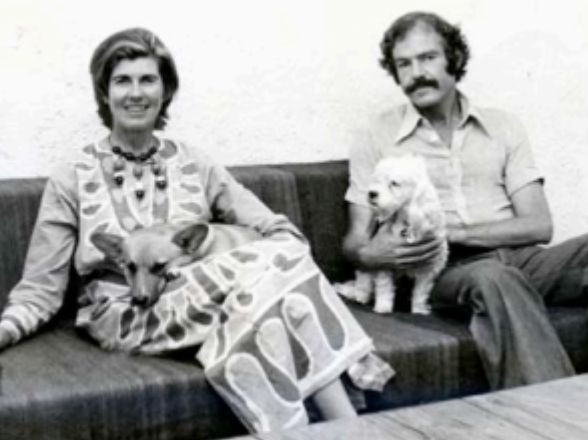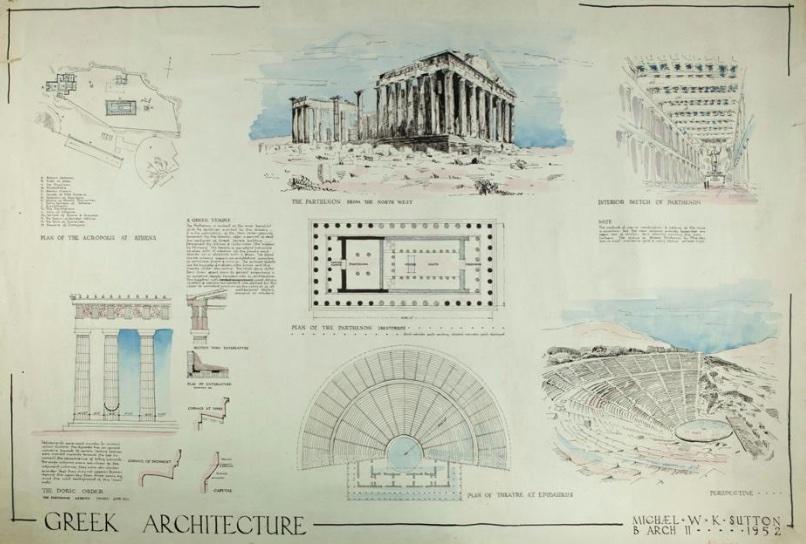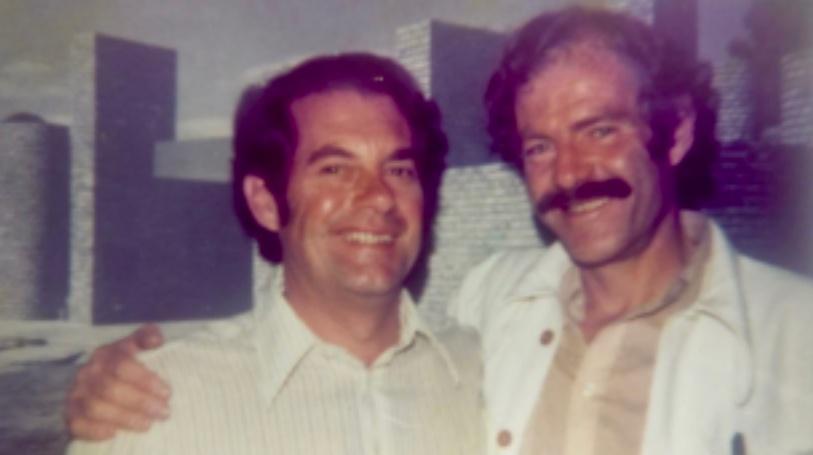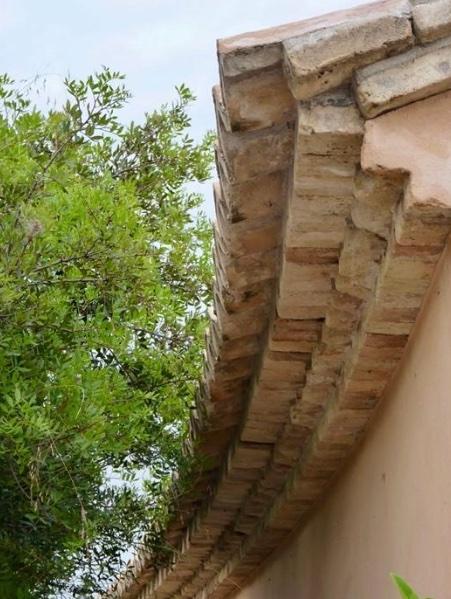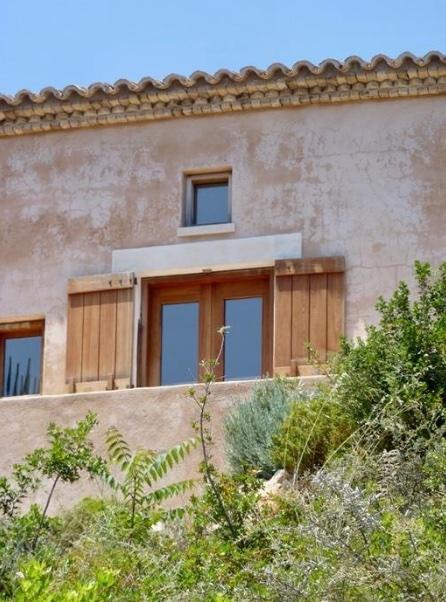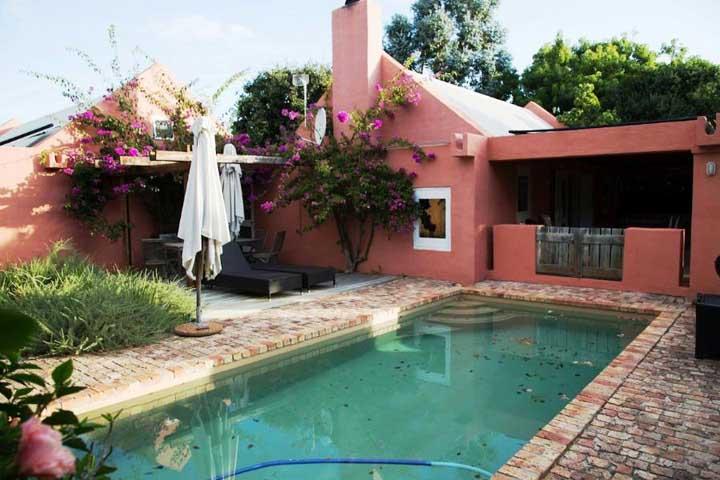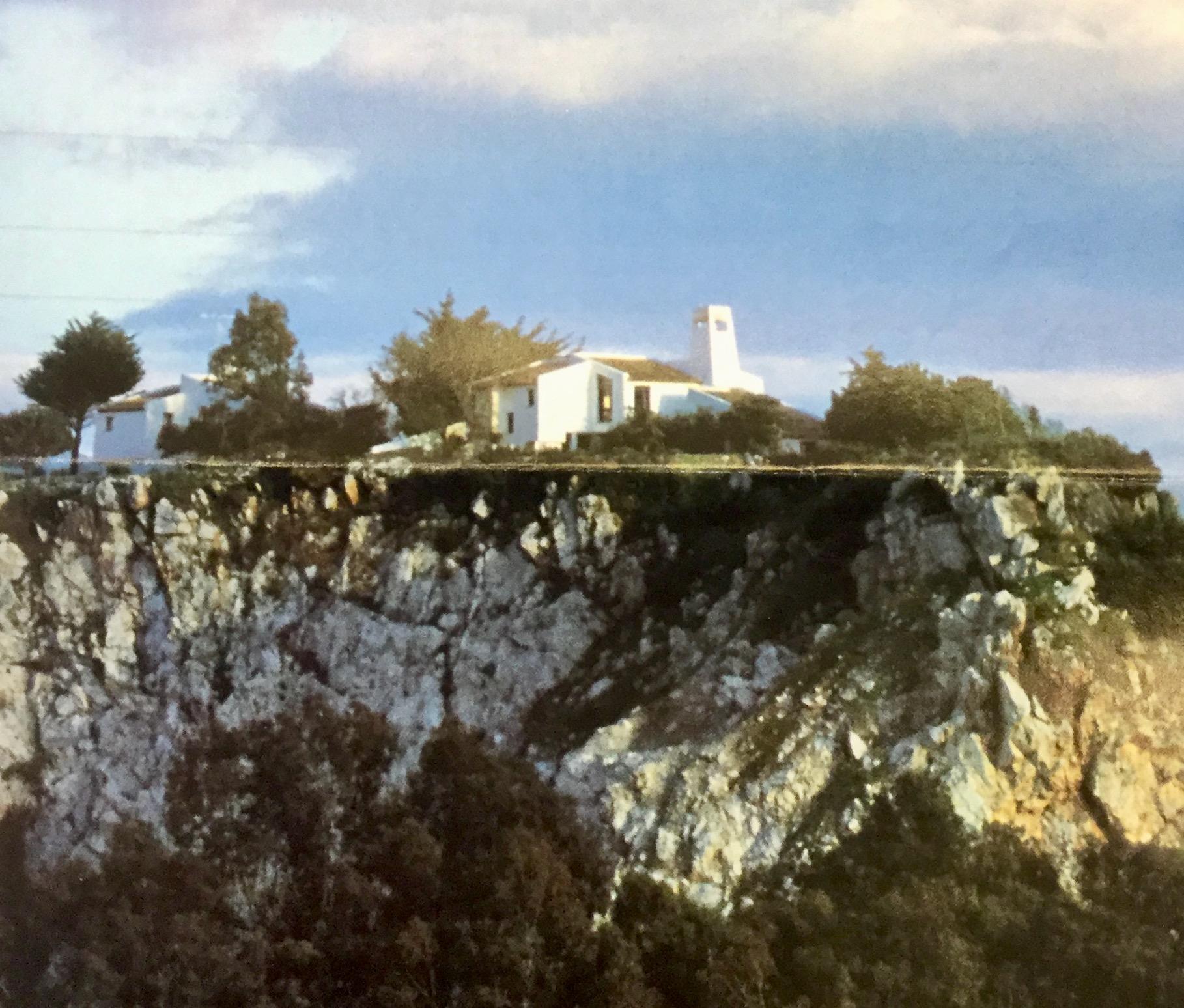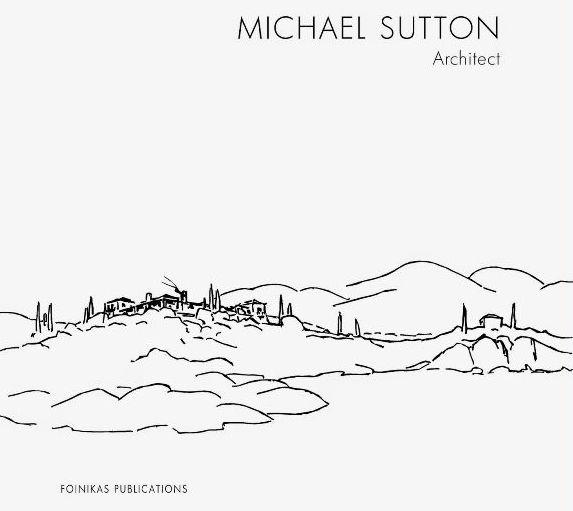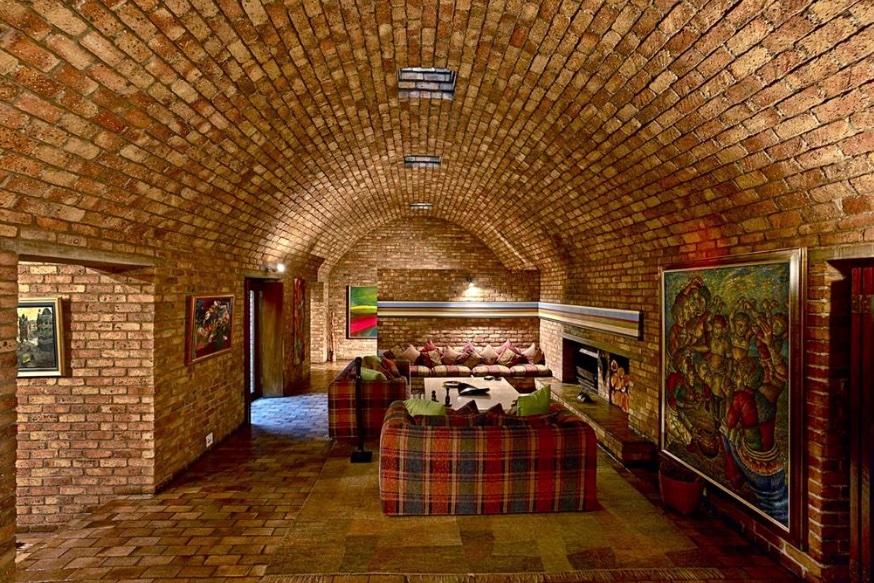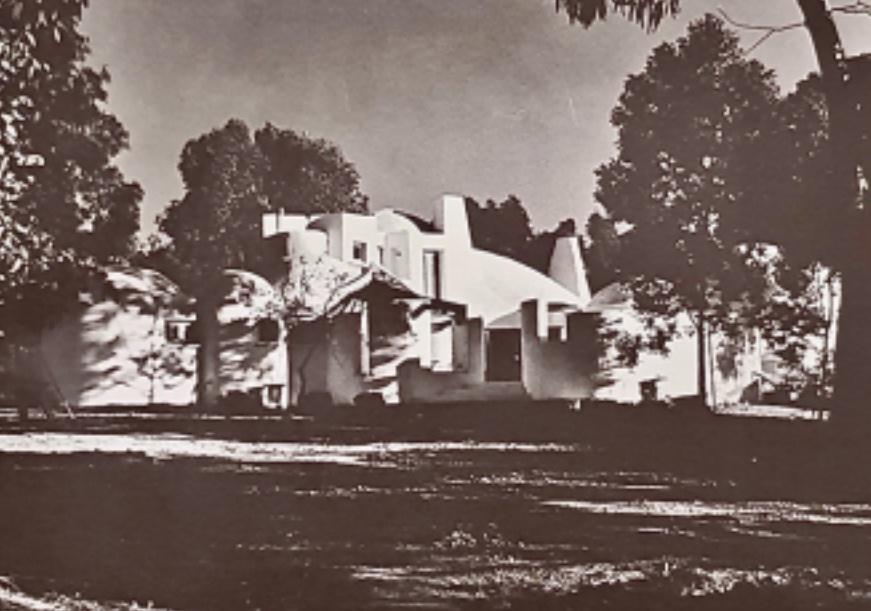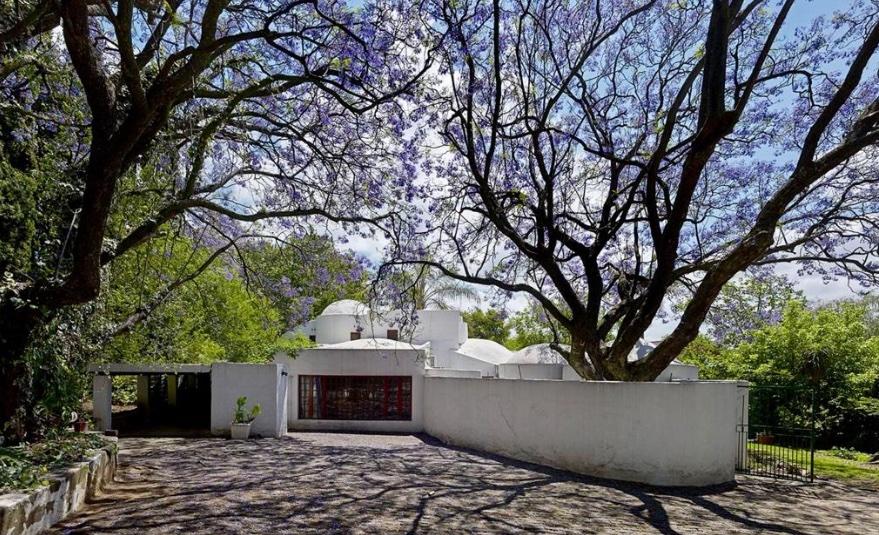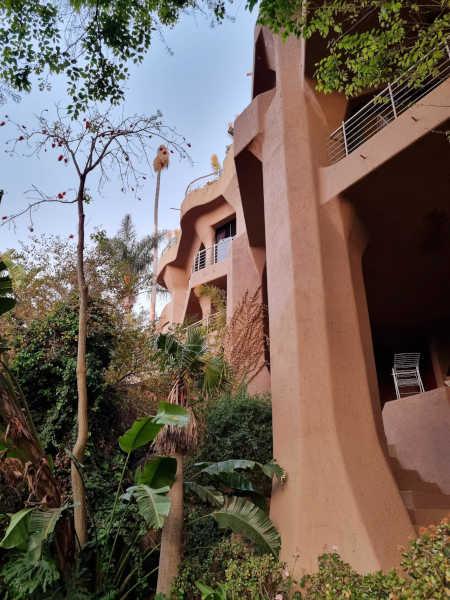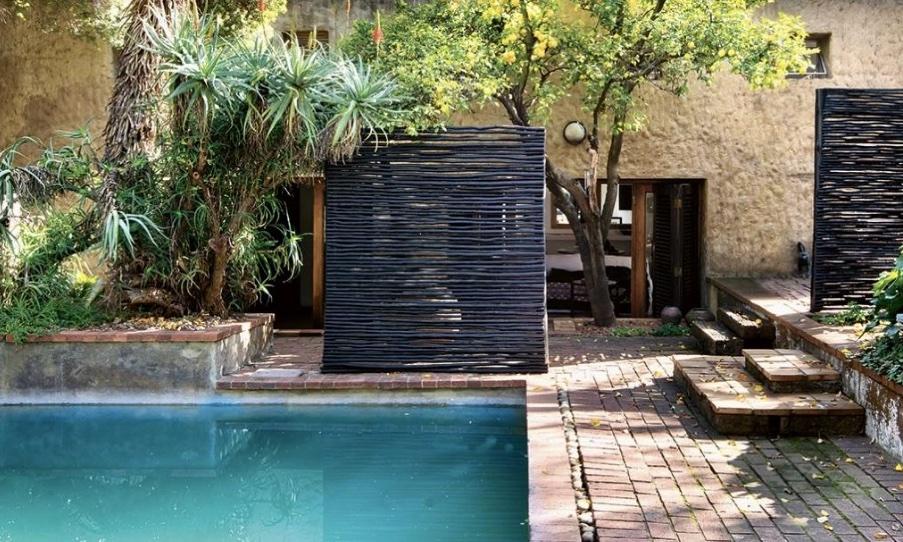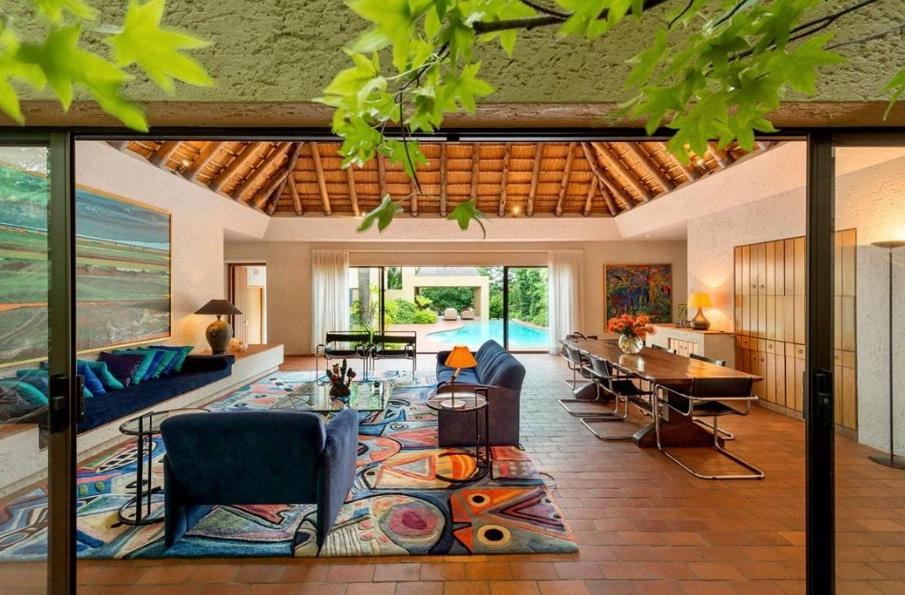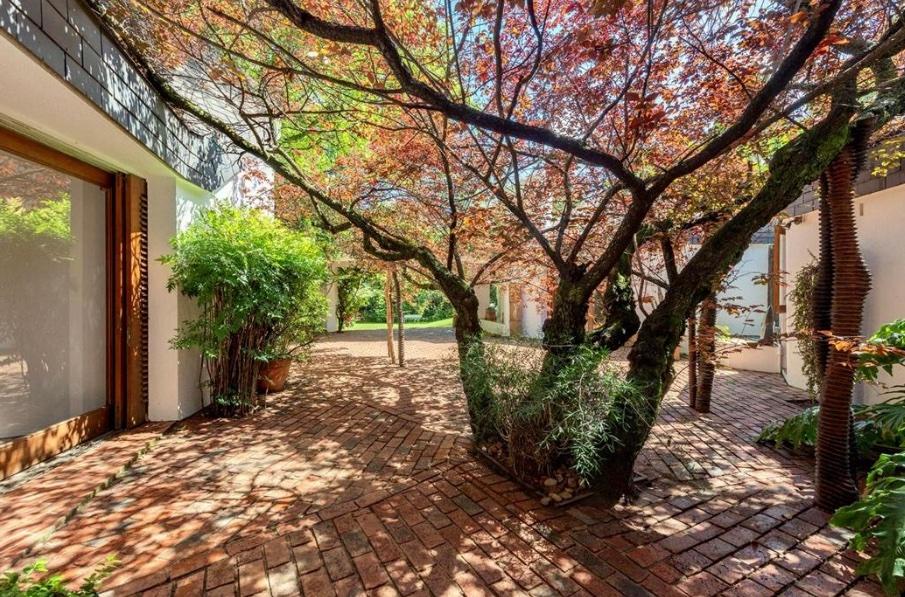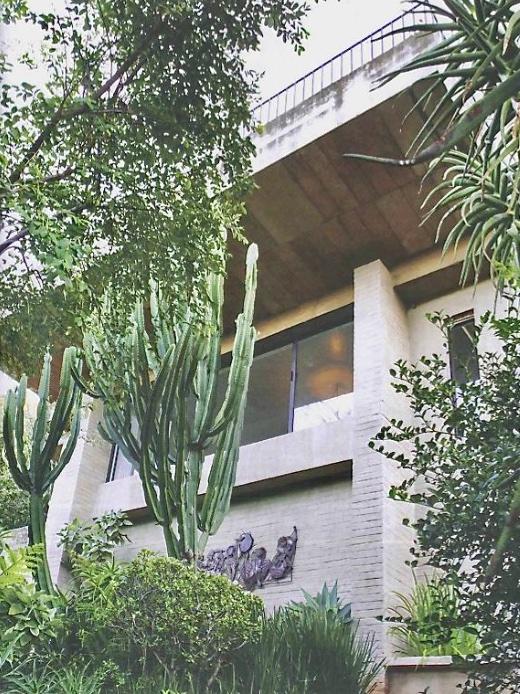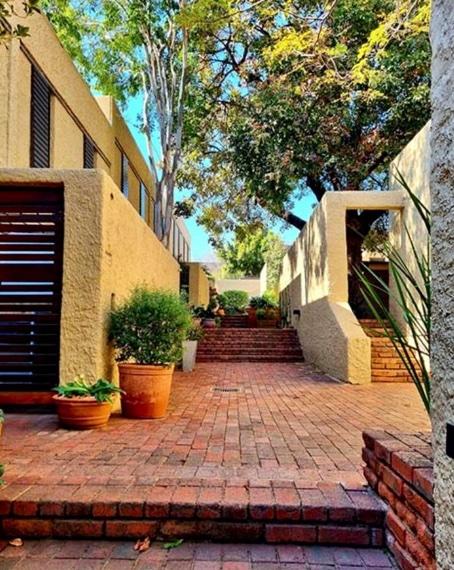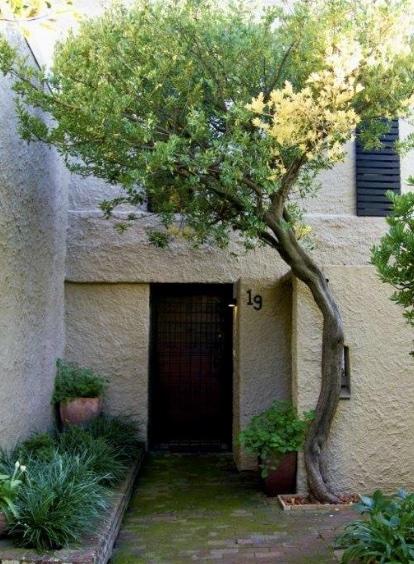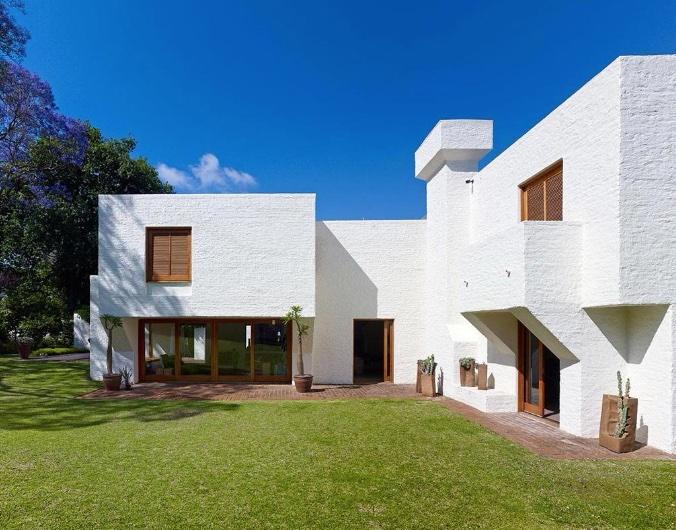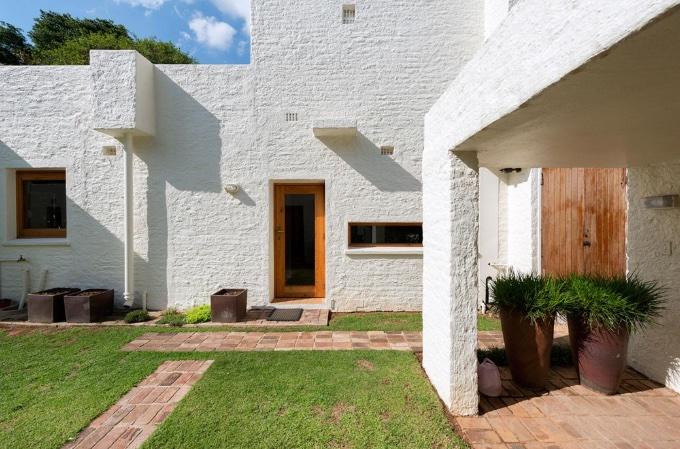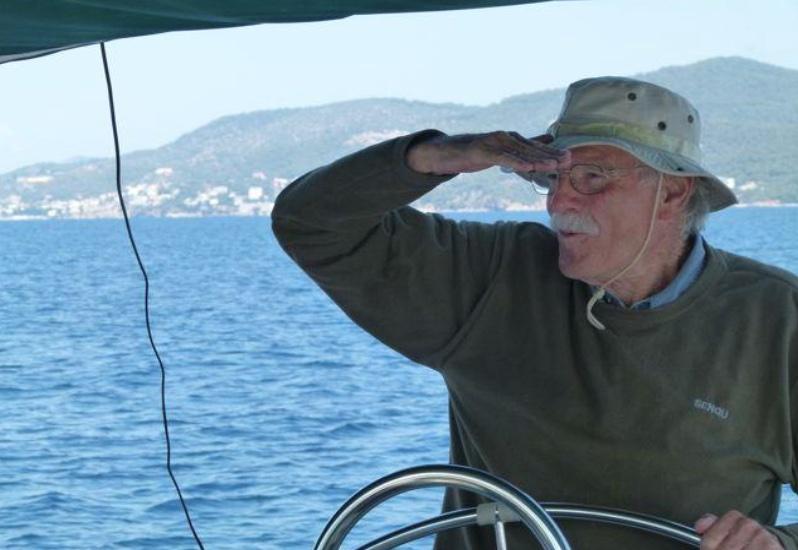
Disclaimer: Any views expressed by individuals and organisations are their own and do not in any way represent the views of The Heritage Portal. If you find any mistakes or historical inaccuracies, please contact the editor.
Hearing about the death of Michael Sutton, architect extraordinaire, on the 22 May 2024 at the age of 96, was a terrible shock, despite knowing it was imminent.
Many of us know Michael Sutton as a brilliant architect who designed masterpieces in South Africa and Greece. His life was extraordinary and his achievements were impressive.
My own association with Michael Sutton goes back to 1972 when I was privileged to work in the office of Michael Sutton and Walker for a year before studying architecture. Thereafter, I worked for the partnership at every opportunity in vacations and then again after graduating. Initially I wasn't sure I wanted to be an architect, but working with him was an inspiration and I quickly made up my mind. The office was a rollercoaster of ideas, always exciting and challenging. With the encouragement of both partners and by example, I knew that I wanted to follow in their footsteps. This is where I met Mohammed Hans, Marcus Holmes, Lynnette Alan and Robert Stasio who all shared my admiration for Michael and all of whom were lifelong friends with Michael.
Michael was born totally deaf in 1928. His sister Ann was also born deaf. Both went to school in England where they were taught to lipread. Neither of them learned to sign which, if it had been their sole means of communicating, would have made integration with the broader society far more difficult. Lipreading made it possible for them to communicate in a natural way with anyone they came into contact with. Some people don't enunciate their speech which mildly irritated Michael who used to tell me to cut my moustache when it obscured my upper lip!
Both siblings were to achieve incredible success in their lives and professions, Michael as an architect and Ann as a landscape architect. The siblings were always very close and worked together on many exceptional projects.
Mike and Ann
Mike, as he was known to most, studied at Wits University between 1951 and 1956 qualifying as a professional architect in 1957. During his study years, as well as after graduating, he worked for Steffen Ahrens; the relationship was to determine his attitude to architecture throughout his life; they kept up a lifelong friendship. He also had a close relationship with Prof John Fassler, head of Wits Architecture School from 1948 to 1967, who took a great interest in his progress while he was at university.
Student work at Wits
As a student, Mike formed a strong bond with the Johannesburg Indian community exemplified by his 70 year friendship with Mohammed Hans and a number of projects completed with the Mia family. Mohammed has known Mike since he was 8 years old and was inspired to study architecture by Mike.
Mike started his own practice in 1961 at the instigation of his best friend and partner Tom Russell. Mike describes his relationship with Tom, “...off and on for nigh on 60 years, he has remained my best friend, companion - an architectural critic”. Tom died in 2022.
He subsequently formed a partnership with John Griffith and then introduced David Walker to form Michael Sutton, Griffiths and Walker. The practice could not sustain three partners and John went his own way leaving the partnership as Michael Sutton and Walker from 1971.
Mike began his deep interest and fascination with Greece in the decades of the 1970's and 1980's, the influence of which is evident in much of his work in South Africa – small deeply recessed windows, integration of inside to outside, thick walls, flat roofs, courtyards and narrow connecting walkways. He always downgraded the influence of the motor car relegating it to the periphery of the property where parking or garages could be clustered and driveways reduced, unlike the developer model where every house has its garage or double garage at the entrance, leading to extensive paving and hard surfaces.
David Walker was invaluable to the partnership while Mike was in Greece, continuing with management as well as design work. In a letter to me after David died in 2021 Mike wrote:
I met David in 1948 when I got a job with an architect whose drafting room happened to be directly above his mother’s bedroom. Flakes of old paint fell like snowflakes onto her bed whenever we played the fool like school boys…. From that time our close friendship experienced so many wonderful and not so wonderful times… 53 years. From 1971 to 1988 he was a great help as my architectural partner in Johannesburg so that I was able to commute often between Johannesburg and Greece...
I remember an occasion where Mike and David were supposed to attend a site meeting together with contractor, consultants, and client. Apparently, the site meeting was protracted and tedious. At some point David realised that Mike was not there, looked round just in time to see him driving off in a cloud of dust. Mike was more than capable of doing any aspect of an architect's work but it's easy to imagine the frustration of being overlooked in conversation by people who hear and don't take the trouble to include. David was fastidious in this regard but not everyone was.
David and Mike
Both Mike and Tom Russell were vehemently opposed to apartheid which they felt they could no longer live with and eventually moved permanently to Greece. Despite being deaf, Mike was gregarious and charming. He loved Greek openness and he engaged easily with people. He met Costas and Penny Apostilades and they became firm friends. His style of architecture captured the essence of Greece without the stylistic trappings of modernism, and captivated them; so began a stream of work in many parts of Greece for them and their friends. His brilliant designs are decidedly regionalist and fit into the Greek landscape in a way that few can match. Incredibly, Mike learned to write notes on his drawings in Greek. He also understood and could speak a limited amount of Greek.
House Apostilades, Cephalonia Greece (Henry Paine)
However, Mike and Tom longed for South Africa and returned after 1994 when they built a house in Stanford near Hermanus.
Stanford House (Artefacts)
But the magic of Greece was too deeply entrenched, and after about 5 years they went back to Greece, missing the Greek culture and environment settling in Galatas in a beautiful cottage gifted to them by Penny and Costas. Gazing out over olive groves to the Aegean and across to the island of Poros, they lived in the Peloponnese from 2005 for the rest of their lives.
The partnership with David Walker endured for many years until David emigrated to Australia in 1988 and the practice of Michael Sutton and Walker was closed.
As related by Mike in his book, the Sri Lankan architect Geoffrey Bawa best expresses Mike's architectural philosophy in his statement: “I have always enjoyed seeing buildings but seldom enjoyed explanations about them – as I feel, with others, that architecture cannot be totally explained but must be experienced.”
Mike's architecture needs no introduction to contemporary South African architects, but it is many years since he was working actively in Johannesburg. Mike described himself to me as a regionalist, but he was not to be pigeon-holed. He learned “…a human scale in buildings and quality of materials” from his mentor Steffen Ahrens. His range of work is extraordinary in its scope of solutions as well as its geography. His houses were designed using inexpensive materials, often very modest, but also grander designs for which he was so well known.
Steffen Ahrens work in Spain
Apart from South Africa, his work extends to Greece, Tanzania and Turkey. In the 1980's he was commissioned to design the refurbishment of a ferry ship called the Flavia, including the exterior appearance.
He owned a traditional Greek Kaiki called Sophia in which he sailed with his friends to many of the Aegean islands, absorbing the essence of the architecture and culture and on which a great many parties were held.
Mike's friends were often bohemian people, all of them interesting and provocative, mostly artists. Some of them were: Joyce Davis (Wits art and architecture), Geoffrey Armstrong and Wendy Vincent (artists), Barbara and Des Greig (artists), Di Gage, Edouardo Villa (sculptor) and many, many more.
I had kept up sporadic contact with Mike over the years, until in 2011 I bought a sailing boat in Greece with my wife, Sally, and we set off for 3 months every year to sail around the Greek Islands. Mike and I reconnected, and we have enjoyed many moments with Mike and Tom in their home and around the Peloponnese. We were even able to entice Mike to come sailing with us from Poros to Hydra a few years ago. It was marvellous to see the delight on his face as he took the helm (at the age of 87, his walking stick propped behind him), sailing briskly on a choppy sea (see main image).
I often think about Mike on his Sofia, experiencing the joy and freedom of sailing with the feel of the wind, the movement of the boat through the sea, the clarity of light. All inspirations for his remarkable architecture.
Mike's deafness had another side; it allowed him to focus and avoid distractions in a way most of us find impossible. Delia Greig, who grew up with the strong presence of Mike, remembers her mother, Barbara, relating: “There was a tremendously savage hail storm in Johannesburg, like there used to be there. Trees torn down, cars wrecked, unbelievable noise of the hail. Mike just worked blissfully right thru it, didn't even look up! So focused, so not disturbed by it”. This is perhaps one of the secrets of his genius?
In 2015, Fonikas Publications of Athens published the book ‘Michael Sutton Architect’. This is a large, handsome volume of brief descriptions, many photographs and plans of Mike’s work in South Africa and Greece plus a selection of Mike’s sketches. All of this is a visual delight and is a collector’s treasure. The book is still in print and may be purchased on line or through Mohammed Hans.
Book cover
In 2020 Mike donated the archive of his South African practice (facilitated by Hanna Le Roux) to Wits; he also created two bursaries for deaf students to study architecture. Wits is in the process of digitising and cataloguing the Sutton Archive.
Following the publication of Mike's book, Clive Chipkin, in a letter to Mike, had this to say about Mike and his work:
What I think is important is that you and your sister have created a tradition – an obscure word for an architectural vernacular, a regional way of doing things, for solving contemporary ways of achieving things in our southern African island (& our Mediterranean) environments – with the glow of modernity and a particular sense of place. So Suttonesque...is that rare and appropriate result...
What particularly interests me is not Sutton in isolation but Sutton absorbing contemporary influences and infusing them with personal perceptions and elegance. It would have been interesting to see the work of your partners, staff and those influenced by this work, definitely including Ann...
In her thesis, Victoria de la Cour (granddaughter of John Fassler), wrote:
Michael Sutton – whose buildings display a sensitivity to scale, to material and the subtleties of function... is representative of an important era in South African architecture. On entering a Sutton building one is struck by a sense of quietness, balance and peace. Living in a Sutton Building allows one an intimate connection with the richness of his architectural language.
...Sutton's buildings have a timelessness in their language, as well as in their material and spatial quality. Rough textures and a lack of embellishment, along with inexpensive materials, created and architecture that was unpretentious and that resonated strongly with its inhabitants.
Mike loved animals and always had a dog around so, another story from Delia Greig:
Mike had a stunningly beautiful Rhodesian Ridgeback called Shaka. While Mike was sitting, Shaka would jump up and sit on his knee. It was too wonderful to see, the two of them sitting solemnly together, staring out like a Pharoah and Egyptian dog God. Very regal, very wonderful: Shaka knew that Michael could not hear, so compensated for him. How he knew I don't know?
I believe that, in the same way that Mike was inspired by Steffen Ahrens' philosophy and work, so too were many architects inspired by Mike; those who worked for him and others like Mira Fassler Kamstra and Nina Cohen. I hope that we who have followed may in turn have inspired others.
His clients ranged across a wide social spectrum and were often somewhat eccentric, many of them becoming lifelong friends. He was one of the few architects commissioned to undertake work in the townships during apartheid and House Mosendane in Rockville Soweto testifies to his long friendship with Johnny and Zaza Mosendane.
House Mosendane, Rockville, Soweto (Yiorgis Yerolymbos)
One of his early houses, built for Di Gage, was influenced by both the Greek island vernacular as well as the Zulu kraal using circular elements with domed roofs. His feel for technology and experimentation was legendary as the Gage house shows. This interest relates to many other projects.
Di's brief to Mike included the following: “I love painting, sculpture, dim lights, exotic baths, brass beds, jasmine creepers, olive trees, cypress trees, anything and everything Greek (!) salty men and pink gins!”
The result was an extraordinary house for an extraordinary woman.
House Gage (Artefacts)
House Gage (Yiorgis Yerolymbos)
In 1967 he designed a house for the parents of Architect Nina Cohen whom he described as “delightful”. He got enormous pleasure from the relationships he had with his clients.
It is important to note that not all the buildings designed by the practice were houses.
House Myhill, Kyber Rock (Wallace Honiball)
Sutton compound (Artefacts)
House van Straaten, Sandton (Yiorgis Yerolymbos)
House Lipschitz Parkwood (Yiorgis Yerolymbos)
House Davis Melville (Artefacts)
Walkways Craighall Park (Sarah Kaminski)
House Smithers (Yiorgis Yerolymbos)
Note from the Johannesburg Heritage Foundation - Many of us who admired and respected Mike are saddened by his passing. We all admired the man and his work. His legacy is in his buildings in South Africa and Greece. We would like to see recognition for the timelessness and significance of Sutton architecture in the form of a commemorative blue plaque.
Copies of the book 'Michael Sutton Architecture' are available from Mohammed Hans: mohansdesigns@gmail.com
Thanks to everyone who assisted in compiling this obituary: Henning Rasmuss, Mira Fassler Kamstra, Lynn Rieder, Mohammed Hans and particularly Kathy Munro for her invaluable contributions.
Comments will load below. If for any reason none appear click here for some troubleshooting tips. If you would like to post a comment and need instructions click here.

